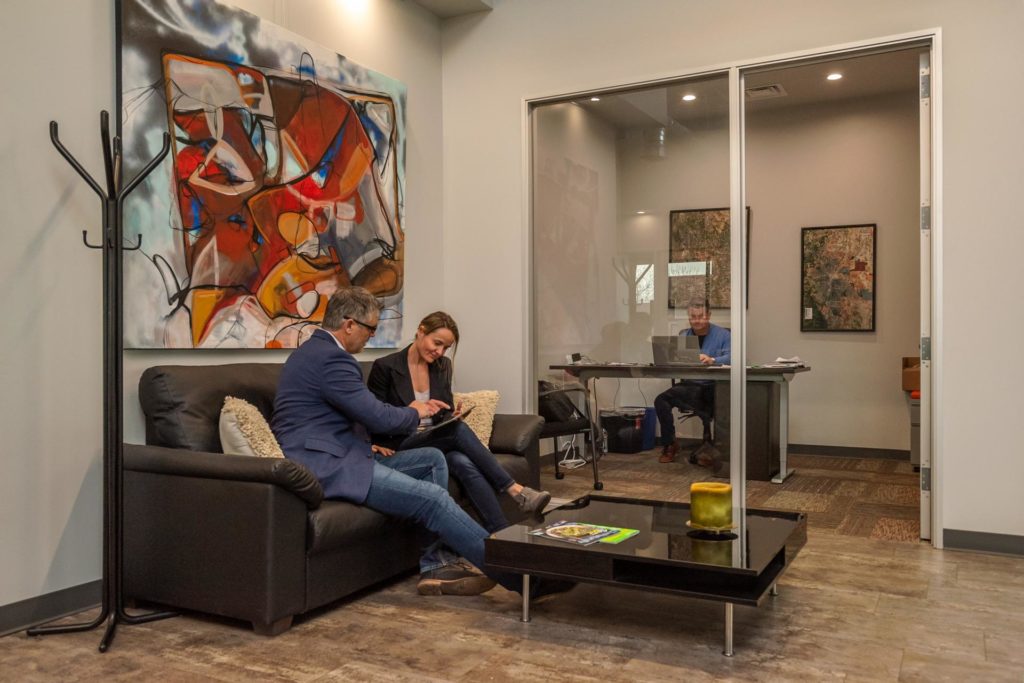By Jason Wingard, Fast Company
In June of this year, an estimated 42% of the U.S. labor force was working from home full time—an experience that has fundamentally changed the nation’s views on where and how we work best. Determining how to integrate these learnings into future real estate decisions will be a difficult task, especially considering all of the challenges that site selection teams already face.
“Figuring out who will work from home and who will require actual office space, which offices to prune and which to keep, how they will be configured and shared, and precisely where they should be sited,” professor Richard Florida wrote in the Harvard Business Review (HBR) last month, “requires more strategic thought, analysis, and planning than ever.”
But where will all those strategic plans lead? What should leaders be thinking about when it comes to their real estate portfolios? Given that it will take time for leases to come due and changes to be made, I asked myself “what are the top trends that will shape the offices of 2022?”
THE HYBRID (NOT REMOTE) WORKFORCE
A key recent development in corporate America is the hybrid workforce, as employees split their time between their home and the office, rather than solely working at one or the other. Although many experts, including me, believe an entirely remote workforce is a smart strategy, recent surveys have shown that the vast majority of U.S. employees prefer a hybrid approach.
Leaders, it seems, are listening. In a Colliers International survey of managers and decision-makers at nearly 80 companies, 86% said that moving forward, employees will work between one and four days at home.
Since this hybrid workforce will be defined by flexible schedules and shared spaces, the offices of 2022 could be smaller. An August KPMG survey found that 69% of CEOs are planning to downsize their office space. “By 2025 I envision we will have a hybrid model and we will be more deliberate in who comes to the office,” said Fran Katsoudas, Cisco’s chief people officer. “It may be that workers come to the office two to three times a week. The shift could make the company rethink its real estate footprint.”
Cisco is far from the only company considering this change. At Google, where 62% of employees want to work in the office “some days,” CEO Sundar Pichai has said the company will “create more flexibility and more hybrid models.” At Ford, where 70% of employees have expressed interest in a hybrid schedule, Jennifer Kolstad, the company’s global design director, has promised to “create a new landscape of work somewhere in the middle.”
THE WORKPLACE ECOSYSTEM
In 2022, offices will still exist, they will just have a new purpose. Rather than being taken for granted—a place where employees automatically report every day—they will become corporate centers specifically meant to spur innovation and connection. In the words of Dominique Bogdănaș, an associate at Colliers International, the future office will be “designed to support collaboration and accelerate creativity and team spirit.”

That said, it will likely be just one destination among many. According to predictions from the global real estate firm Cushman & Wakefield, tomorrow’s offices “will no longer be a single location, but an ecosystem . . . to support flexibility, functionality, and employee well-being.” The company estimates that 50% of the workforce will soon embrace a workplace ecosystem comprised of offices, houses, and third places such as cafes, coworking spaces, and libraries.
Starbucks, for example, plans to practice “hoteling,” with employees reserving office space only when they need to collaborate with others. Interest in such “agile workspace” strategies has reportedly grown 500% since the pandemic began. Over the next year, while its employees continue to work remotely, the coffee giant plans to redesign its headquarters: It will eliminate most private desks, renovating the extra space to foster cooperation and make it feel more like—a coffee shop.
DECENTRALIZATION
By 2022, the strategies behind corporate site selection will probably look different, too. Until recently, many leaders embraced what CBRE Labor Analytics calls “fewer and bigger,” as in, a limited collection of large offices. Following the pandemic, some have begun to question this approach, since geographic diversity can help “reduce the risk of disruption to business operations” when crises occur. Instead, many leaders are now prioritizing decentralization.
One popular idea is the “hub-and-spoke” model, which involves a hub office in an urban area accompanied by “spokes” throughout the suburbs. This approach could give the hybrid workforce the flexibility it demands. In one example, REI recently sold its brand-new 400,000-square-foot campus and announced plans to instead open multiple offices around the region. “The dramatic events of 2020 have challenged us to reexamine and rethink . . . where and how we work,” said CEO Eric Artz. “As a result, our new experience of ‘headquarters’ will be very different than the one we imagined more than four years ago.”
Alternatively, some leaders are choosing to open a string of offices in emerging markets. Amazon, for instance, is investing $1.4 billion into offices outside of Seattle, including in cities like Dallas, Detroit, and Phoenix. Pinterest may be planning something similar, as it recently terminated its lease for 490,000 square feet of office space in San Francisco. “As we analyze how our workplace will change in a post-COVID world, we are specifically rethinking where future employees could be based,” CFO Todd Morgenfeld told CNN. “A more distributed workforce will give us the opportunity to hire people from a wider range of backgrounds and experiences.”
In the wake of the coronavirus, neither our personal lives nor our work lives will ever be the same. Management must not only rethink their office requirements for this new reality. They also need to consider a host of related issues, including the security, commuter transit, and supply chain implications of a reconfigured workplace. Forward-thinking leaders, therefore, are already looking past the offices of today and starting to think about how these new perspectives and trends will transform the offices of 2022. As Florida wrote in HBR, “It’s time for bold leaders to break ranks and establish new beachheads, spreading their investments wider and helping to build new innovation ecosystems.”
Jason Wingard is Dean Emeritus and professor of Human Capital Management at the School of Professional Studies at Columbia University, with an academic focus in the areas of leadership development, professional learning and human capital management. He currently sits on the board of directors of Duff & Phelps.
If you’re looking for a hub office in the Boulder County area, you’re in the right place! Explore what 520 HUB has to offer. Unique shared workspaces conveniently located in Lafayette, CO.


